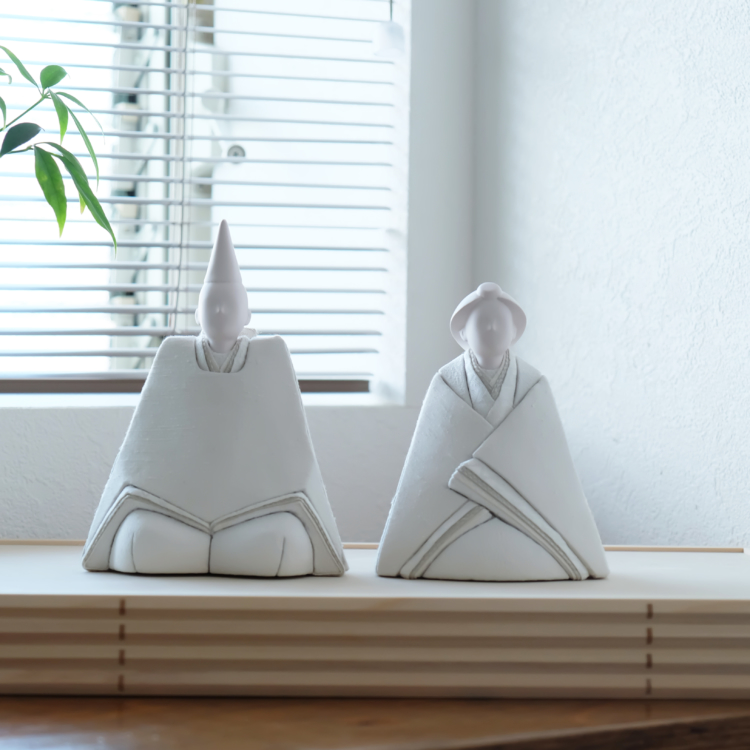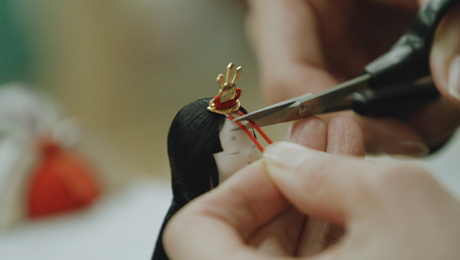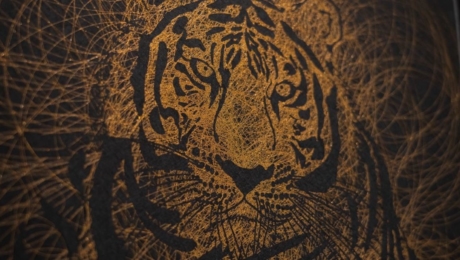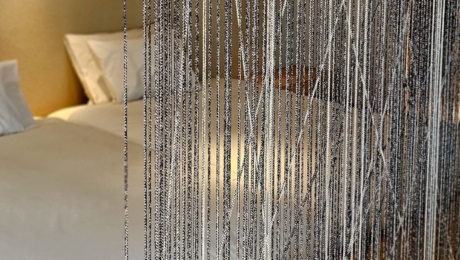

Today’s hina dolls that feature a modern take on Edo chic
2023.03.29
LIFEThese hina dolls are eye-catching, pure white in color with simple shapes, appearing like objet d’art. The modern designs of these dolls, which differ from the glittery versions of the past, blend well with modern interiors. Matsuzaki Doll Co., Ltd., which is involved in the traditional craft of festival dolls, carried out a project to redesign festivals, with the finished product unveiled at the end of February 2023.
“Lifestyles have changed drastically from the past, so we wanted to create a hina doll for the future that befits the modern times in Reiwa period,” says Mitsumasa Matsuzaki, President of the company. The project kicked off one year ago with the support of Ryoichi Kobayashi, who runs the product brand Studio GALA. The two owners talked about making the doll design as simple as possible that falls in line with today’s minimalist lifestyle.
In the beginning, Mr. Matsuzaki had a hard time letting go of the conventional aesthetics in creating hina dolls, which included adding accent colors or drawing the eyes or mouth.. As a result of gradually removing preconceived notions, they have arrived at the simple, all-white final design. The face has only a slight definition of a nose.
“We created a standing and seated version. The standing version features a bold design combining square and triangle shapes. I asked myself if it was okay to pare the design down this much, but I thought it could be nice to have that aesthetics of a sculpted objet d’art.”

The method used to create hina dolls is a traditional doll-making method called kimekomi. First, grooves are carved into the body made from a mold using paulownia sawdust, to which fabric is then attached by glue, giving life to the wooden form. The Edo chic style, which is classic of Matsuzaki dolls, was also incorporated into the simple form. Even though the doll appears to be all-white when seen from a distance, there are in fact a variety of white fabric used to decorate the body. This incorporates the Edo cultural practice known as “48 browns and 100 grays.” Just as the people of Edo, who were forbidden from luxury, enjoyed creating a huge array of brown and grey colors with different materials and dyeing techniques, Matsuzaki combined white fabrics that carry different expressions. The Yarai crest placed on the seated version of hina doll is designed to showcase various expressions of white, and also embody the doll’s purpose as a charm against evil spirits since ancient times. This is also linked to the roots of hina dolls, which is meant as prayer dolls for the healthy growth of children and to avoid calamities.
“I hope these dolls will not only be seen as festival dolls for celebrating children’s first Doll’s Day, but also for women to enjoy as grown-ups,” says Mr. Matsuzaki. They can be decorated with peach blossoms or the sweet treats of hina-arare. The doll itself can also be casually incorporated into one’s interior design. This marks the beginning of a new era where hina dolls can be enjoyed in a variety of ways.







